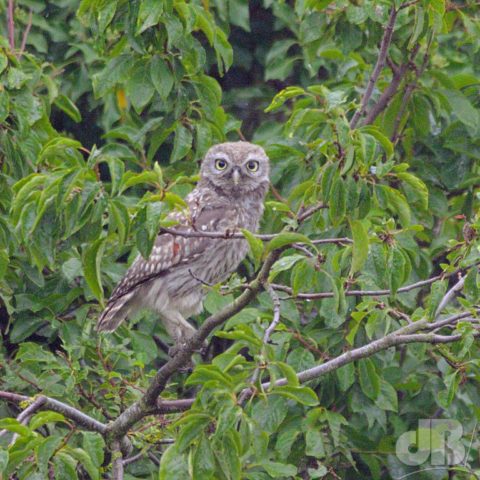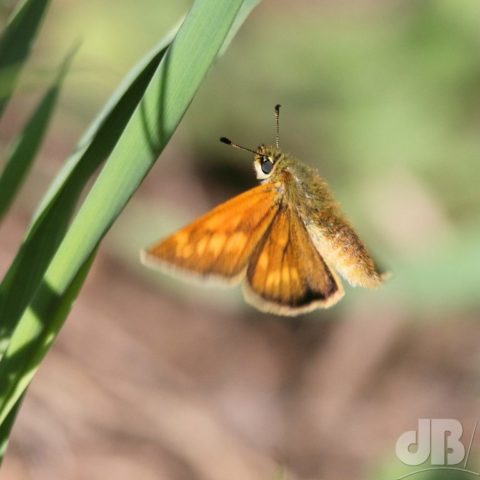My friend Andy, who, like myself, is a keen amateur wildlife photographer, often asks me questions about the birds and butterflies he photographs. I can usually come up with an answer. But, today, we were talking about Little Owls and he casually referred to the species as the Small Owl. As far as I know, there is no species known as the Small Owl. I pointed this out and he came back with an intriguing question. Why are the birds “Little” but the butterflies “Small”? As in the Little Owl but the Small Blue, for instance.

Among the birds, we have Little Owl, Little Gull, Little Stint, Little Ringed Plover, Little Egret, Little Auk, Little Grebe, Little Tern. But, for the butterflies, we have Small Blue, Small Tortoiseshell, Small Skipper, Small Heath, Small Copper, Small Pearl-bordered Fritillary, Small White.

It’s puzzling…there is a subtle difference in our perception of what we mean by “little” and “small”, but it’s hard to define. Small is the opposite of big, little is the opposite of large. The Oxford English Dictionary suggests that while little is generally synonymous with small, it can have emotional implications associated with it that the word small does not, I can’t quite put my finger on what those differences are. When we discuss dwarfism, people with that condition are often referred to as “little people” but “not small people”. Small perhaps sounds quaint or undersized, whereas little just sounds like the opposite of big.
Small is perhaps a neutral or factual comment on size, while little tends to evoke something more personal or affectionate. “Little” can often feel more intimate, for instance when someone says “my little sister” or “a little treasure.” It can suggest warmth, vulnerability, or even something cherished. We don’t have singers with the nickname Small, it’s Little Kim and Little Jimmy Osmond. It’s less about the objective size and more about the relationship to size. But, why does that work as it does with birds versus butterflies?
Etymologically, the word small, a word of Germanic origin, means “thin, slender, narrow, fine” but also refers to a diminutive animal. Indeed, the true root in proto-Indo-European (PIE) is the prefix (s)melo- used to talk of a “smaller animal”. Little, etymologically speaking, is also Germanic in origin, the PIE root is “leud” meaning small.
So, back to Andy’s question why are the birds “little” but the butterflies “small”? I wondered whether it had something to do with the etymology of the words or perhaps whether the naming happened at different times and one descriptor was favoured for some reason at a given time.
Another possible explanation is that the use of small for the butterflies was done because there is a large counterpart. For the Small Tortoiseshell, there is a bigger but similar species the Large Tortoiseshell. Similarly, for the Small Skipper, there is a Large Skipper. However, there are no pairings among the birds, there are lots of different species of gull, but there is no Big Gull nor Large Gull to be a counterpart to the Little Gull, the same with the Little Owl, we do not have a Big Owl or a Large Owl species. Of course, we do have the Lesser Black-backed Gull and the Great Black-backed Gull. The lesser implying the smaller of a pairing and great simply meaning big, as in Great Britain.
Often these kinds of differences are related to Anglo-Saxon versus Norman etymology, as in the peasants grow the pigs, cattle, and sheep, while the Norman aristocrats eat the pork (porc), beef (boeuf), and mutton (moutton). Stephen Moss just reminded me that he alludes to this in his excellent book Mrs Moreau’s Warbler: How Birds Got Their Names. “I noted that three groups of birds have Norman French names – ducks and gamebirds, which were eaten by French aristocrats, and raptors, which were used to hunt them. Same principle as farm animals and meat!”
Then there are the Great birds…
Great White Egret, Great Tit, Great Shearwater, Great Black-backed Gull, Great Crested Grebe, Great Grey Shrike, Great Northern Diver, Great Crane. The “Great” also essentially means big and there are “lesser” birds that are generally smaller than the common species: Lesser Redpoll, Lesser Whitethroat, Lesser Black-backed Gull, Lesser Spotted Woodpecker…
Moss also points out that in the US there are birds with “least” in their names ‘Least Grebe’, ‘Least Sandpiper’, and ‘Least Bittern’, for instance, we don’t have “least” birds in UK English…which maybe a throwback to US English etymology and the great divide between English and American. But, we do have the Least Weasel (which in Britain is just the weasel) and we do have the Least Black Arches moth!
UPDATE: Moss put me in touch with fellow nature writer Peter Marren, author of the excellent Emperors, Admirals, and Chimneysweepers. He had this to say:
“I have never really thought about why birds are great/little/lesser but butterflies are small/large, and I don’t really have an explanation. I suppose traditions in naming spring up early, and that namers therefore tend to follow an established formula. Some of the small/large butterfly names are 18th century or even, with Small Heath, late 17th century, so it might reflect usage at the time – Georgian vs Victorian? Simple English vs 19th Century elaboration?”
Marren points out that there are a few ‘little’ moths e.g. the Little Thorn – named later, perhaps. But again more usually large/small. He adds that “Great’ just seems the wrong word for a British butterfly or moth, somehow, but not sure I could explain why. ‘Large’ is often (usually?) used where there is also a ‘small’, e.g. Large and Small White, Large and Small Blue, Large and Small Tortoiseshell. But I guess the same pairing is true of birds.”
A pub conversation with a retired friend who was an English teacher, had me saying “All creatures great and small”, which is almost a crossover usage…the hymn should perhaps be “All creatures great and lesser” or “All creatures large and small” but neither would sound quite so poetic as the original hymnal words by Cecil Frances Alexander.